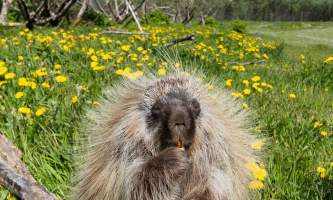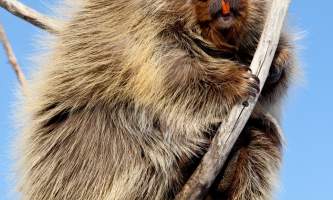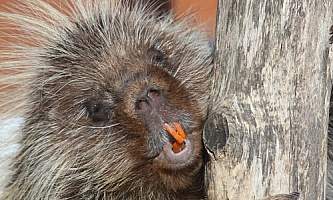Porcupine
Here we are at one the North American Porcupine exhibits at the Alaska Wildlife Conservation Center. As you stand next to this enclosure, I promise the smell is not from the staff or a fellow bystander. That “B-O” smell is actually the porcupine!
Typically, when you tell people about porcupines, the fear of quills takes over. Fun fact, however, they cannot actually shoot their quills! Quills are made of keratin; the same materials hair and fingernails are, so, if they could shoot their quills, it would essentially be the same thing as people running around shooting their hair at any given moment. Crazy, right? It just doesn’t happen! In order to feel the negative effects of quills, one must make physical contact with the porcupine. Ouch! I’ll pass..
Porcupines are covered with up to 30,000 quills on their body at any given time. The only area porcupines do not have quills would be on the face, underbelly and bottom of their feet. Quills have a spongy matrix and have microscopic barbs on their tips. When exposed to heat and movement, these barbs swell, which allows the quills to work deeper and deeper into tissue. Even more interesting? The quills are covered by fatty acids that function as an antibiotic, preventing infection at the wound caused by quills.
Porcupines are strict vegetarians, sometimes living off just a single tree for an entire winter. Given the opportunity, they will like a variety of fruits and vegetables. Porcupines are members of the rodent family, with constantly growing orange teeth! Porcupine teeth are equipped with extra iron in their enamel which causes the orange color. Orange teeth is actually a sign of good health for porcupines as the older they get, the more orange their teeth tend to be.




